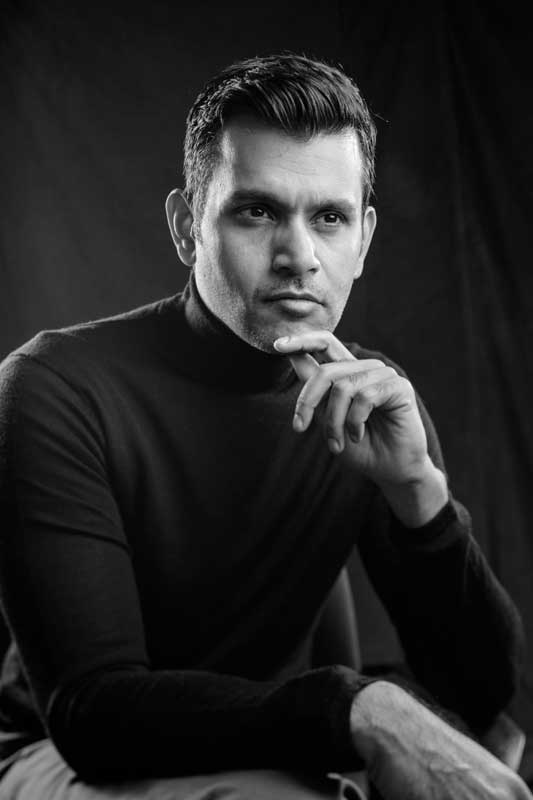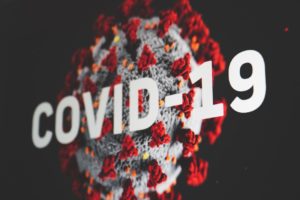Many are starting to say that pandemic is near its end. That this is the last strain, the final gasp of the virus. But is it the end of the pandemic? Or is it, as Churchill once said, just the end of the beginning.
The virus, now in its third year, has infected people in all continents and killed over 5 million people. It has kept mutating, with each version leaving a fresh trail of infections, crippled healthcare systems, and destroyed families. The latest mutation appears less lethal, but even before this strain appeared, many of us began suffering COVID fatigue: we were looking ahead to the past coming back–to where things were before the pandemic, where meetings were mostly face-to-face, where everyone commuted to work, and where most adults the world over spent their waking hours.

I often imagine a farmer waking up somewhere in Poland in January 1940 looking at the smoldering remains of his farm after the advancing German forces destroyed everything in its wake. I can seem him shaking his head in disbelief, hoping that the worst was behind him. That things will be back to where it was; that somehow the war’s madness would soon be over; and that his life would likely go back to its old routine.
But it didn’t. Ever. What began in Poland would soon engulf the world, eventually costing millions in lives and causing untold misery. By war’s end in 1944, everything changed–a change that was ushered in by the technologies used in the war effort. Soon after the war came highways, intercontinental flights, and suburban life. Women entered the workforce in large numbers, more people went to college than ever before, American corporations became multinationals, and new world order, shaped by global trade and ballistic missiles, emerged. Gone was the idyll of the simple farm and its ability to sustain generations.
Are we in a similar space with COVID-19?
Might we be like the Warsaw farmer, and people during many calamities, suffering from some form of historical shortsightedness? A longing for the past caused by a lack of agency, that makes us begrudgingly adjust with hope that soon, today, tomorrow, or in a just a few more weeks, it will all be back to living and working as we once did, oh not so long ago.
Or maybe there is something less historical, perhaps even natural. Evolutionary theory suggests that organisms reacting to massive changes in the environment seldom return to a former state, even if the conditions are reversed. It is a law of irreversibility that comes from developing adaptations. And many of us, as individuals and organizations, have adapted how we live, work, and learn during the pandemic.
These have ushered in changes that are likely to continue.

For one thing, the organizational landscape might forever be different. The culture of urban work-life that was shaped by the second world war, where most adults worked in tall office buildings and small cubicles, has adapted into one in which most adults partly or wholly work from home. The challenge for organizations would be to accept this new reality, which many are unwilling to do. Organizations will need to find novel ways to develop a shared culture and keep people vested in the organization’s mission in the absence of interpersonal interactions, where camaraderie and a shared vision organically develop. This would likely increase demand for off-site meeting and shared work spaces and give rise to a whole new world of work-at-home computing and personal services.

Another disruption has been to the system of education, especially higher education in the US, which for decades has focused on expanding the campus model, even as their tax-payer support has shrunk. Universities across the nation have made-up their budgetary deficits by increasing tuitions, making students shoulder the financial burden for it. This has squeezed family budgets and saddled students with crippling debt, which has risen to historical levels in the past decade. Already, campuses nationwide are reporting the lowest ever undergraduate enrollment rates, likely because of uncertainty about the future. But rather than embrace this new reality, throughout the pandemic, colleges and universities have been trying to get students back into campus, to get back to things as they once were. Some have even expanded their campuses.
The need of the day is for more virtual programs, maybe even hybrid offerings, with perhaps just a part of the degree requiring a stay on campus. This would reduce the cost of education, making higher education more affordable and accessible. Like it or not, higher education has changed. In the coming years, universities the world over will expand their online offerings, providing students competitive alternatives, and it’s time the American public university system shaped up.
Finally, the pandemic has changed how people live. With everyone spending more time at home, many are moving out of cramped city apartments to neighboring boroughs and cities, with larger, more spacious housing stocks. Consumption is shifting in ways not seen since the end of the second world war. People are buying electric cars, using touch-less payment systems, home delivery services, and fitness apps. Office buildings in central business districts are becoming less attractive as are long commutes on gas guzzling automobiles. There is a new world order emerging, much like it did after the second world war, with green energy, silicon chips, and cybersecurity becoming the new theaters of competition and conflict.

It was technology that reshaped the world after the second world war. Thanks to it, the war’s destruction was followed by creative expansion and prosperity the likes of which we had never seen before. Now technology is doing the same. From virtual education to remote work, electric cars, and bitcoins, the disruptions in business, finance, and our way of life are just starting—and a metaverse of opportunities is coming online. The world before the pandemic is prologue. And the world of tomorrow filled with opportunity is here, as long as we accept it.
*An earlier version of this piece was published in Medium and LinkedIn.

